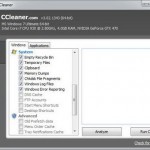How to Build an Effective Support System for Employees Dealing with Personal Crisis
It’s difficult to separate personal life from work. Many employees bring personal problems into the office, affecting the entire workplace environment. Failing to address a crisis can lead to complex consequences for many people.
Distractions can lead to deteriorating performance, accidents at work, low productivity, more stress, and even health problems. Health-related expenses resulting from reduced productivity, employee absenteeism, and occupational injuries amount to $190 billion a year.
Recognize the Signs
Signs of a personal crisis may include mood swings or changes in behavior, productivity, attendance, quality, or communication. Someone who is personable and engaged may become irritable and withdrawn. An employee whose output used to be excellent can start making a lot of mistakes and missing deadlines. These signs should alert you to a possible personal problem and the fact that your employee might need support.
Talk to Them
Talk to your employee, express your concern, and offer support. Ask open-ended questions and listen to them. Don’t make assumptions about how they feel or what’s happening to them. You could say that you’ve noticed that they have been late for work a few times in the past month and ask if everything is fine. If they made some errors in a recent report, you might bring it to their attention and ask if something might be affecting their concentration. The purpose of this conversation is to recognize challenges and explore possible solutions.
Look for a Solution
An employee experiencing a personal crisis needs a mechanism to cope. This could be flexible work hours through well-thought-out workforce scheduling, extended deadlines, reduced workload, or counseling. A 2023 report shows that 66% of women who have flexible work arrangements intend to stay with the company for at least three years, compared to just 19% who don’t have these. Flexibility in the workplace is desired by 81% of all desk workers.
Document what accommodations you have provided and communicate them to the employee clearly, as well as to any other affected parties.
Monitor the Employee’s Progress
Monitor the employee’s performance after you have agreed on the accommodations and possible coping mechanisms and solutions. Give recognition and provide constructive feedback. Encourage the employee and check in with them about their satisfaction and well-being. Review and adjust the accommodations as needed based on the person’s situation and performance. If their performance gets worse or simply does not improve, you might need to take further action, such as giving them new and different tasks and designating time and space for team bonding. Their performance will improve if they feel they are not alone and the team supports them.
Maintain Balance and Boundaries
Always maintain a balance and healthy boundaries when supporting employees dealing with a personal crisis. Be supportive and compassionate, but don’t get too involved or try to be their friend or therapist. Employers should respect their staff’s privacy and autonomy. They shouldn’t get too close or pressure them to share more than they feel comfortable sharing.
Stress Management in the Workplace
Managers should also protect their own well-being because their performance worsens if well-being deteriorates. You can achieve this by managing stress, seeking help when needed, and delegating tasks. The focus should be on communication. 80% of employees say they are stressed out by poor communication in the company. As of 2024, workload is the leading cause of stress for 39% of employees, who say they can’t manage it within office hours.
80% of employees admit that work-related stress affects their relationships with family members, friends, and coworkers. For members of Gen Z and millennials, the main stress causes are:
- Excessive workloads
- A poor work-life balance
- Not being able to express themselves at work
Recap
- Signs of a personal crisis include mood swings, changes in behavior, productivity, attendance
- Ask the employee open-ended questions
- Offer flexible work hours, extended deadlines, reduced workload
- Monitor their performance – further action if no improvement
- Don’t get personally involved; be attentive to your own well-being
Tags: personal crisis, workplace











































